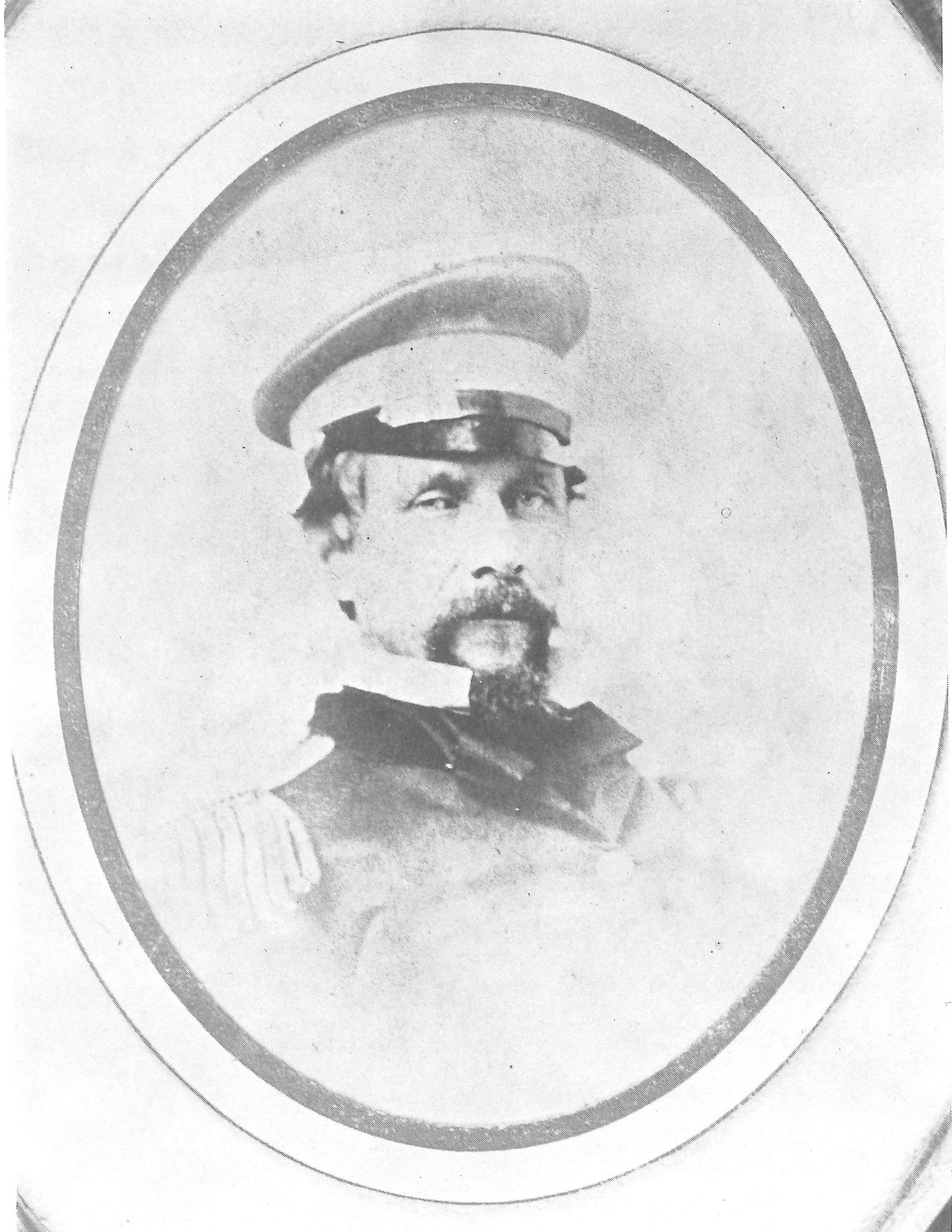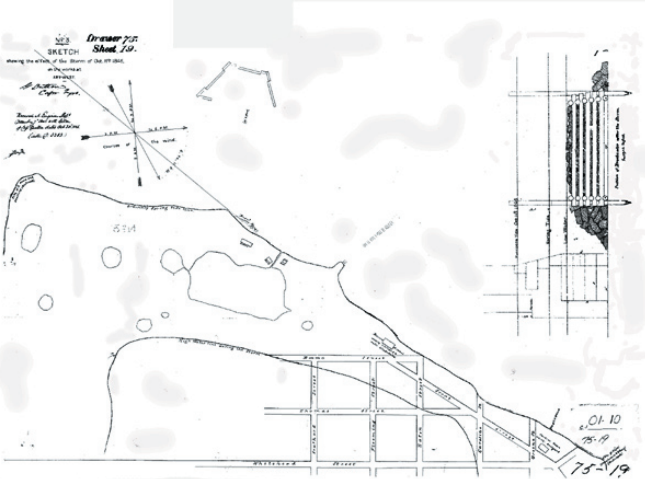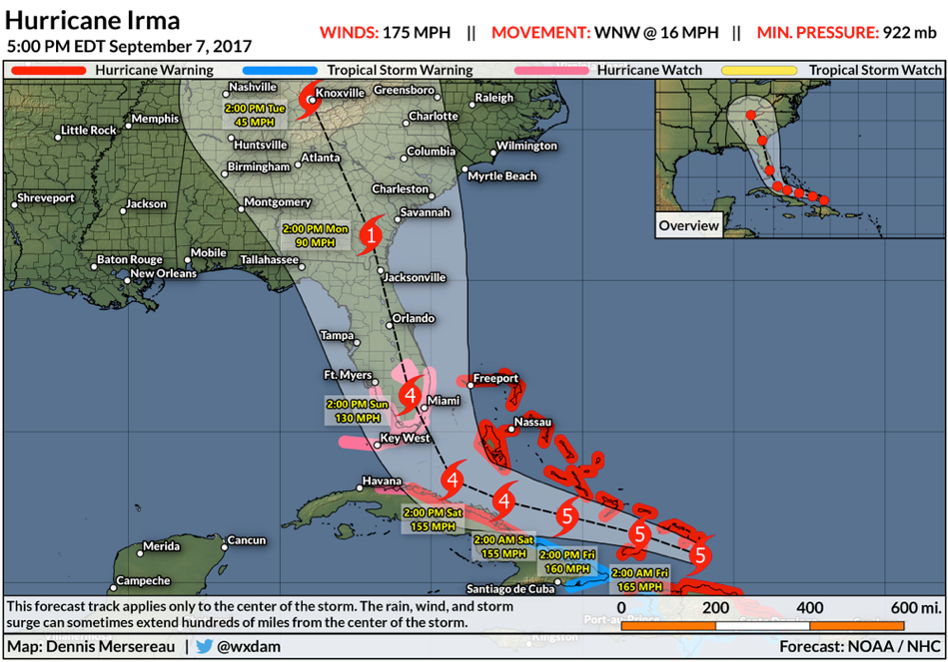Parents were separated from their children, husbands from their wives, and all was confusion, terror and dismay.
Lt. William C. Pease, U.S. Revenue Cutter Morris, 1846
 Editor’s note: Through the ages, many hurricanes have struck the Florida Keys, however, the Key West Hurricane of 1846 (a.k.a. The Great Havana Hurricane) is believed to be one of the worst, destroying the city and killing over 250 residents. The following is a recounting of the storm by
Editor’s note: Through the ages, many hurricanes have struck the Florida Keys, however, the Key West Hurricane of 1846 (a.k.a. The Great Havana Hurricane) is believed to be one of the worst, destroying the city and killing over 250 residents. The following is a recounting of the storm by eyewitness and U.S. Revenue Cutter Service officer, Lt. William C. Pease. The Revenue Cutter Robert Morris was a topsail-schooner of 78 feet carrying six nine-pound cannons and a crew of 24 officers and men. This account first appeared in the New Orleans Daily Delta newspaper on October 23, 1846. The text has been lightly edited and a few insertions added for ease of reading.
eyewitness and U.S. Revenue Cutter Service officer, Lt. William C. Pease. The Revenue Cutter Robert Morris was a topsail-schooner of 78 feet carrying six nine-pound cannons and a crew of 24 officers and men. This account first appeared in the New Orleans Daily Delta newspaper on October 23, 1846. The text has been lightly edited and a few insertions added for ease of reading.
One of the most violent hurricanes that has ever shown itself in this country passed over Key West on Sunday, the 11th inst. [October 11, 1846], and has laid that town in ruins. Time alone prevents my going in minutely into particulars as I could wish but nevertheless I will give you as graphic a description of it, as I am able at this time. The scene was awful, almost if not quite, beyond description.
The gale commenced about 10 a.m. on the 11th instant and about 2 p.m. it blew a perfect hurricane. I was on board the revenue cutter Morris about one mile from Key West at anchor with 150 fathoms [900 feet] of chain out, yards down on the deck, and every preparation made for the storm. Our riding bitts were working, and it became necessary to back them with deck tackles, the current was now moving by us at a rate of 12 miles per hour: the Morris laying broadside to it as well as the wind, made her labor very heavy, and in danger of parting her chains, when we were compelled to cut away the mainmast for the safety of our lives as well as the vessel. When the mast went over the side it hung by the triatic stay [between mast tops], and in danger of falling on us every moment: a man could not get aloft, and we were anxious to hold on the foremast as the last resort in case the schooner should founder at her anchors. After a few moments a man made out to aloft and cut the stay,  when the mast fortunately fell clear of us.
when the mast fortunately fell clear of us.
It was a narrow escape. Thirty men tossing to and fro on the deck of a small vessel, with a mast suspended over their heads as it were by a thread, made the situation anything but enviable. We now battened down the hatches, and all hands passed through the wardroom. The vessel continued to labor very heavily: and the sea made a complete breach over us. It was with difficulty we could keep her free with both pumps going and baling from wardroom and berth-deck.
At 4 p.m. the air was full of water, and no man could look windward for a second. Houses, lumber, and vessels drifting by us—some large sticks of lumber turned end over end by the force of the current, and the sea running so high and breaking over us brought lumber, casks, etc., on board of us and across our decks. At quarter past four the water was up to our lowest half-ports inboard, and gaining on us when our starboard chain parted: and we commenced dragging we know not which way, as our compasses flew around in such a manner that they became useless for that object. Now our fears were that we should go out over the  Reef and into the Gulf, and before we got into the Gulf the vessel must strike and bilge: but that would not save her. At this time we cut away the foremast, when a sea struck us knocking the schooner on her beam-ends, carrying away our bulwarks, cranes, larboard [starboard] boat, quarter house, swinging boom, and everything movable off deck: and to right the vessel we hove the lee guns overboard and knocked out the ports—all expecting momentarily to go to the bottom. We were in this suspense for about one hour, when we struck on some reef unknown, when our larboard chain parted, and we made preparations to scuttle the vessel. The hurricane gradually subsided, although at midnight we were sticking heavy, and blowing a gale from S.E.
Reef and into the Gulf, and before we got into the Gulf the vessel must strike and bilge: but that would not save her. At this time we cut away the foremast, when a sea struck us knocking the schooner on her beam-ends, carrying away our bulwarks, cranes, larboard [starboard] boat, quarter house, swinging boom, and everything movable off deck: and to right the vessel we hove the lee guns overboard and knocked out the ports—all expecting momentarily to go to the bottom. We were in this suspense for about one hour, when we struck on some reef unknown, when our larboard chain parted, and we made preparations to scuttle the vessel. The hurricane gradually subsided, although at midnight we were sticking heavy, and blowing a gale from S.E.
On the morning of the 12th the scene was anything but agreeable: we had drifted about three miles, and about half of that distance over a shoal with only about two feet of water on it at ordinary tides—this is the depth of the water around the Morris when I left her. Around her, large wrecks of all descriptions: one ship on her beam-ends, three brigs dismasted, also three schooners: three vessels sunk in a small channel, and four vessels bottom up. How many persons attached to these vessels had been drowned I am unable to say. We have picked up only two—one of them a young man who I knew intimately. The light-ship at the N.W. Pass has gone from or sunk at her mooring. The lighthouse at Key West and Sand Key washed away, and Key West in ruins. A white sand beach covers the spot where Key West light-house stood, and waves roll over the spot where Sand Key was.
that distance over a shoal with only about two feet of water on it at ordinary tides—this is the depth of the water around the Morris when I left her. Around her, large wrecks of all descriptions: one ship on her beam-ends, three brigs dismasted, also three schooners: three vessels sunk in a small channel, and four vessels bottom up. How many persons attached to these vessels had been drowned I am unable to say. We have picked up only two—one of them a young man who I knew intimately. The light-ship at the N.W. Pass has gone from or sunk at her mooring. The lighthouse at Key West and Sand Key washed away, and Key West in ruins. A white sand beach covers the spot where Key West light-house stood, and waves roll over the spot where Sand Key was.
Fourteen persons were either killed or drowned at Key West Light-House, and not a soul escaped to tell the tale. The only vestige of the Light-House to be seen is a portion of the iron posts of the lantern, and some pieces of soapstone, which have washed one hundred yards from the spot where they fell.
At Sand Key, six persons were killed or drowned—most likely the former, as the general impression is that they fled to the stone Light-House for refuge, the Key being very low. Poor old Capt. Appleby [Lighthouse Keeper Joshua Appleby, buoy tender namesake]—I knew him very well: he told me the first hurricane would sweep all to destruction, and alas! His prediction is verified.
 At Key West the tide was five feet high and running six miles an hour through the center of the town. The citizens fled to the back part of the town, which is rather higher than the rest, into the bushes—laid down and held on, expecting every moment the waves would reach them. Parents were separated from their children, husbands from their wives, and all was confusion, terror and dismay. The island trembled to its very center. A few hours more and a white sand beach would have covered the new desolate remains of Key West. The occupants of the marine hospital were expecting every moment to go into eternity. A large stone building, surrounded with five feet of water running by six miles an hour, cutting the sand from under the foundation made the situation awful. Thirty feet of the stone washed away from one corner, fifteen from the other, and the roof blown off.
At Key West the tide was five feet high and running six miles an hour through the center of the town. The citizens fled to the back part of the town, which is rather higher than the rest, into the bushes—laid down and held on, expecting every moment the waves would reach them. Parents were separated from their children, husbands from their wives, and all was confusion, terror and dismay. The island trembled to its very center. A few hours more and a white sand beach would have covered the new desolate remains of Key West. The occupants of the marine hospital were expecting every moment to go into eternity. A large stone building, surrounded with five feet of water running by six miles an hour, cutting the sand from under the foundation made the situation awful. Thirty feet of the stone washed away from one corner, fifteen from the other, and the roof blown off.
All the wharves are washed away or injured—not one warehouse escaped the fury of the storm—wood and stone seemed all alike going to destruction. There are not more than six out of 600 houses but are unroofed or blown down!
The public buildings at the fort, as well as the wharf are all gone, and the Fort itself is a mass of ruins. It is estimated that the Government alone will lose at least $200,000 by the hurricane.